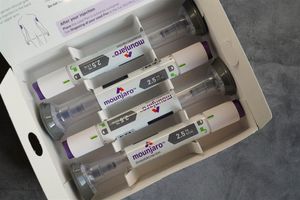Financial News
Rowdy Oxford Calls for Stronger Disaster Communication in Wake of Hawaii Tsunami
JACKSONVILLE, NC / ACCESS Newswire / August 8, 2025 / In the aftermath of the recent tsunami that struck Hawaii's coastal regions, emergency preparedness expert Rowdy Oxford is encouraging local and national agencies to reevaluate how public communication is handled during fast-moving disasters. The tsunami, triggered by a strong undersea earthquake near the Pacific Rim, caused significant damage along parts of the Big Island and Maui. While early warnings were issued, confusion surrounding evacuation zones, shelter access, and safety updates revealed weaknesses in current communication protocols.
"Disasters don't wait for perfect messaging," said Oxford, a U.S. Army veteran and Emergency Preparedness Liaison Officer (EPLO) to FEMA. "When the waves are coming, people need clear, timely, and trusted guidance. That's where we still have work to do."
Oxford has spent over two decades coordinating civilian and military emergency response efforts. His experience gives him a unique perspective on the challenges communities face during high-pressure situations. He believes the Hawaii tsunami revealed a broader issue seen across the United States. Communication systems are often fragmented, inconsistent, or overly technical when clarity matters most.
What Went Right and What Can Improve
Rowdy Oxford praised local responders and emergency crews for acting quickly and with determination under intense pressure. "They did incredible work with the tools they had," he said. "But every disaster shows us areas where we can do better, especially when it comes to how we speak to the public during emergencies."
Some residents said they did not receive alerts in time. Others were unsure if they needed to evacuate, which routes were safe, or where shelters were located. In several coastal towns, guidance from different levels of government used varying terms, leaving people uncertain about what to do.
"People will act if they trust and understand the information," Rowdy Oxford explained. "When the message is unclear or arrives too late, that hesitation can become dangerous."
Recommendations for More Effective Communication
Oxford shared several practical recommendations to improve public messaging in future disasters across Hawaii and beyond:
1. Use Clear, Simple Messages During Crises
"In the middle of a fast-moving emergency, people don't need technical explanations," Oxford said. "They need to know where to go, what action to take, and how urgently they need to move. Keep it short and direct."
2. Designate a Single Source of Official Information
Multiple agencies giving updates can be confusing. Rowdy Oxford noted that during the tsunami, people received different instructions from state, county, and federal sources. "One agency should be chosen to lead public updates so there is no mixed messaging."
3. Build Multiple Layers of Alert Systems
Relying on one alert method is risky. "Text messages, radio, sirens, social media, and even door-to-door alerts should all be used," he said. "If one system fails, another can fill the gap."
4. Empower Trusted Community Voices
Rowdy Oxford encourages local governments to prepare well-known and trusted figures, such as pastors, school principals, and neighborhood leaders, to deliver updates. "People often respond more quickly when the message comes from someone they know."
5. Distribute Visual Evacuation Maps Before Disasters Happen
Evacuation zones and routes need to be clearly marked and distributed ahead of time. "People should already have printed maps in their homes, especially in areas where the internet or cell signal might go down."
6. Conduct Regular Public Drills
Oxford says communities should not wait for a real event to test their plans. "Practice builds confidence and familiarity. Everyone should know what alerts sound like and where to go if a tsunami is coming."
Turning Lessons Into Long-Term Improvements
Rather than focus on what went wrong, Rowdy Oxford emphasizes the importance of learning and evolving. "Responders did their job with dedication and courage," he said. "Now it's our responsibility to build on that and prepare even better for the next time."
He also pointed out that public communication is not just about issuing statements. It's about building trust before disaster strikes. "People are more likely to listen if they've heard from those same voices before," Oxford said. "Consistent outreach builds confidence and faster reactions."
As the Pacific region enters its most active storm and seismic season, Rowdy Oxford hopes Hawaii's experience encourages more investment in readiness. "Tsunamis and other natural disasters will keep coming," he said. "But confusion doesn't have to. We can give people the tools to respond faster and more confidently if we communicate clearly and work together."
About Rowdy Oxford
Rowdy Oxford is a U.S. Army veteran and serves as an Emergency Preparedness Liaison Officer to FEMA. With more than 20 years of experience in defense, disaster logistics, and commercial strategy, he supports coordination between military and civilian agencies during national emergencies. Oxford regularly advises on leadership, operational planning, and resilience building. He is also a strong advocate for mentoring veterans and creating stronger public-private partnerships in emergency response.
To learn more visit: https://www.linkedin.com/in/rowdy-oxford/
Contact: email oxford@rowdyoxford.com
SOURCE: Rowdy Oxford
View the original press release on ACCESS Newswire
More News
View More





Quotes delayed at least 20 minutes.
By accessing this page, you agree to the following
Privacy Policy and Terms Of Service.



